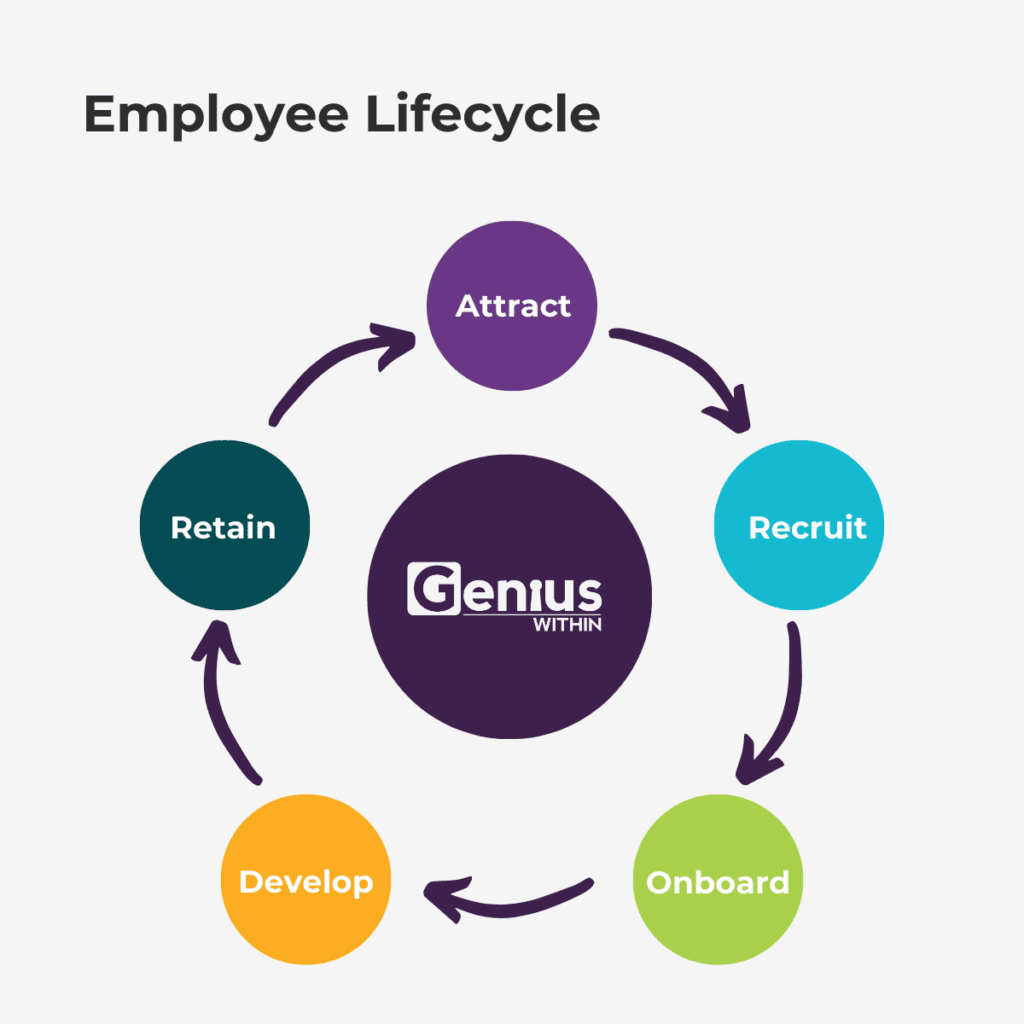Posted 20 Oct 2025
How HR Can Help Managers Drive Sustainable High Performance for Neurodivergent Employees
How HR can reframe performance management and wellbeing practices to help managers focus on outcomes, reduce conflict, and retain neurodivergent talent through inclusive, strengths-based approaches.
This is Blog 5 of 5 in our Neuroinclusive Employee Lifecycle series, where we’ve explored how HR can work with managers to attract, recruit, onboard, and develop neurodivergent talent through practical, strengths-based strategies. In this final instalment, we’re looking at how performance management and wellbeing practices can work hand-in-hand to ensure neurodivergent employees not only succeed, but sustain that success over the long term.
Because here’s the truth: even the most talented and high-performing employees will struggle to maintain output if their wellbeing is compromised. And if performance reviews are based on subjective style or neurotypical expectations, those employees may never get the recognition — or the support — they deserve.
By shifting the focus to outcomes and creating a culture that values psychological safety, HR can help managers reduce conflict, improve retention, and enable neurodivergent employees to perform at their best, sustainably.

Measure Impact, Not Style
Traditional performance reviews often measure how work is delivered, rather than what’s delivered. This can unintentionally penalise neurodivergent employees whose communication style, social presence, or working patterns differ from neurotypical norms — even when their results are outstanding.
Instead, HR can help managers align performance evaluations with tangible, measurable outcomes:
- Accuracy and quality of work.
- Innovation and problem-solving impact.
- Delivery against deadlines and milestones.
- Customer or stakeholder satisfaction.
When managers are clear about the outcomes that matter, they can recognise high performance without getting distracted by stylistic differences.
✅ Quick tip: Audit your performance review templates. If criteria like “team player” or “good communicator” appear without context or measurable standards, replace them with outcome-based measures linked to actual business goals.
Make Feedback Accessible
Performance feedback is most useful when it’s understood — and that means delivering it in ways that match the recipient’s processing style. For some, verbal feedback in a meeting works fine. For others, the ability to review feedback in writing, at their own pace, makes a world of difference.
Alternative feedback channels to consider:
- Written summaries following verbal reviews.
- Recorded video or audio notes to explain points in detail.
- Shared documents where feedback and questions can be tracked.
These options give neurodivergent employees the time and space to process information and respond thoughtfully — leading to better understanding and less stress.
✅ Quick tip: At the start of a review cycle, ask each team member how they prefer to receive feedback and build that into your process.
Individualised Development Plans
Performance management isn’t just about recognising what’s working — it’s about enabling future growth. For neurodivergent employees, that means building development plans around strengths and interests, rather than trying to “fix” what makes them different.
Practical steps include:
- Using strengths-based assessment tools to identify high-value skills.
- Matching those strengths to business-critical tasks or projects.
- Offering development opportunities that align with preferred working styles.
✅ Quick tip: Create a “strengths-to-tasks” matrix for managers to use during performance reviews. It’s a quick way to ensure development planning remains aligned with what each person does best.
Free Download!
Click here to download our Strengths-to-Tasks Matrix template.

Link Performance to Wellbeing
Even the best performance management system will fail if wellbeing is neglected. Neurodivergent employees often operate in environments that can drain mental energy — from noisy open-plan offices to rigid schedules. When wellbeing is supported, performance is more consistent, innovation increases, and burnout risk decreases.
Wellbeing strategies for sustainable performance:
- Sensory-conscious workplaces — Quiet zones, noise-cancelling headphones, adjustable lighting, or remote work options.
- Wellbeing check-ins — Informal 1:1s that focus on energy and stress levels, separate from performance discussions.
- Neurodivergent Employee Resource Groups (ERGs) — Peer support, mentoring, and advocacy to boost belonging.
✅ Quick tip: Keep wellbeing check-ins distinct from performance reviews to encourage openness and trust.
The Business Case for Inclusive Performance & Wellbeing
When managers measure outcomes instead of style, and when wellbeing is part of the performance conversation, organisations benefit from:
- Higher retention rates — employees are less likely to leave when they feel valued and supported.
- Reduced conflict — fewer misunderstandings around “how” work is done.
- Sustained productivity — consistent performance without burnout cycles.
Research from Deloitte (2022) found that inclusive teams outperform peers by 80% in team-based assessments and report significantly higher engagement scores when wellbeing is prioritised. This is not just about fairness — it’s about strategic advantage.
What This Means for HR
As the custodians of organisational culture, HR leaders can embed these practices into performance and wellbeing frameworks to make neuroinclusion a reality, not just an aspiration. That means:
- Designing outcome-based review templates.
- Providing accessible feedback options.
- Equipping managers to link performance with wellbeing support.
At Genius Within, we help HR teams:
- Reframe performance management to focus on strengths and outcomes.
- Build sustainable wellbeing programmes for neurodivergent employees.
- Equip managers with practical tools to support performance and retention.
Get in touch with our expert organisational consultancy team to discover how you can become a neuroinclusive organisation one step at a time.
This concludes our 5-part Neuroinclusive Employee Lifecycle series.
Catch up on previous blogs here:
